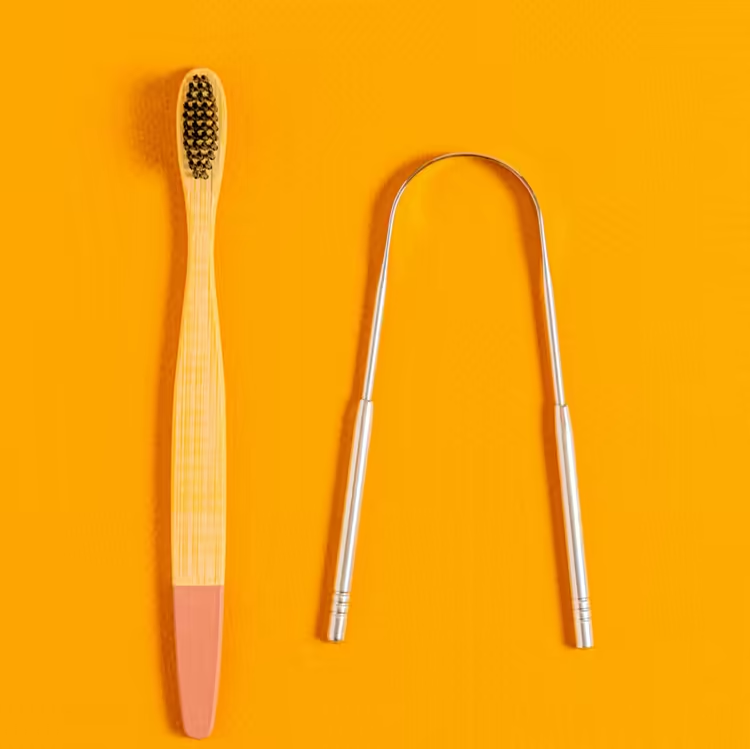Mastering Dental Hygiene: A Comprehensive Guide to Optimal Oral Health
Good dental hygiene is vital for the maintenance of healthy teeth and gums, preventing oral diseases, and establishing a healthy environment for overall fitness and well-being. This involves a combination of individual habits and professional assistance to remove tartar and plaque; reducing the risk of cavities, and gum infection; and promoting fresh breath and a bright smile. Poor oral hygiene is linked with systemic health issues such as diabetes and cardiovascular disorders.

In this comprehensive guide, we will explore crucial aspects of dental hygiene focusing on maintaining overall oral health. We will delve into the interconnected domain of dental and oral hygiene along with a practical guide for improving our daily habits to ensure a healthy oral cavity.
Understanding Dental Hygiene in Oral Health
Dental hygiene refers to the maintenance of oral health through a set of regular preventive practices and habits. These practices encompass daily activities such as proper brushing of teeth with fluoride toothpaste twice a day, flossing daily to remove interdental debris and plaque, and regular dental check-ups with certified dental hygienists. This helps prevent common oral diseases like tooth decay (cavities), gum inflammation, oral infections, and bad breath (Halitosis) and ensures good oral and overall health.
Importance of Dental and Oral Hygiene
Maintaining healthy dental hygiene is proven to be linked with the well-being and proper functioning of the human body. Studies have shown the importance of oral health for ensuring the growth and nourishment of good gut microbiomes, leading to fitness and well-being. Bad oral hygiene is associated with conditions like diabetes, cardiovascular problems, and respiratory infections.
By focusing on dental hygiene, a brighter smile with healthier-looking teeth and fresher breath can ensure a boost in confidence in social and professional settings. Also, this preserves natural teeth and saves a ton of money from invasive dental practices like fillings, root canals, and tooth extractions.

Ensuring appropriate dental hygiene plays a crucial role in enhancing the quality of life by reducing the probability of experiencing oral pain, discomfort, infections, and related emergencies.
Practices for Effective Dental Health and Hygiene
The fundamentals of effective dental hygiene that can reduce the chances of bad oral health can be summed up as follows:
Properly Brushing the Teeth
Maintaining proper dental hygiene starts with the brushing of teeth in the most efficient manner. One should start by carefully picking a brush with soft bristles so that it is not harsh on the gums and the enamel. Also, many people are not aware of the fact that toothbrushes should be replaced regularly. If the bristles are worn out, the toothbrush should be replaced immediately. But even if the bristles are good in shape, replacing the toothbrush every three to four months can significantly improve oral health and hygiene.
The brush should preferably be with a small head so that it can easily reach the entire mouth especially the back and inside section of the teeth. It is recommended by dentists and hygienists to apply a pea-sized amount of fluoride paste on the toothbrush. Fluoride toothpastes containing at least 1000 parts per million (ppm) help strengthen the outer layer of the enamel by forming a protective layer on it which can prevent cavities from forming.
Using a lot of toothpaste serves no good since anything above a pea-sized amount goes to waste. In case, someone is allergic to fluoride, there are many fluoride-free options available in the market. People can also choose toothpaste based on the condition of their gums and teeth as recommended by their dental healthcare provider.

Recent studies have shown that toothbrushes should be kept at a 45-degree angle with the bristles facing toward the gumline for deeper cleaning and plaque reduction. Using gentle pressure, the toothbrush should be moved in a circular motion across the mouth. Moving from the outer surface to the inner surfaces with a special focus on the molar teeth can be an effective way of avoiding any left-over food particles in the spaces resulting in bacterial growth and ultimately cavities.
Brushing your teeth at least twice a day for no less than two minutes – preferably in the morning and before bedtime is advised. This helps in cleaning the accumulation of bacteria overnight and getting rid of mouth dryness due to sleep. Similarly, it is important to ensure a peaceful rest at night by removing all the food particles and plaque that have buildup throughout the day.
Use of Dental Floss or Interdental Brushes
Flossing daily has been established as an essential measure for maintaining dental hygiene. When flossing, take a piece of dental floss around 18 inches and wind most of this around the middle fingers with only a few inches visible between them. Follow this with a gentle back-and-forth motion of the floss between the teeth.
Make sure that the floss makes a C-shaped curve along every tooth to clean below the gumline. Use a clean section of the winded floss for each tooth so that the spread of bacterial spread over is avoided. It is recommended to floss at least once a day giving proper time to reach in between each tooth.
Additional sessions of flossing throughout the day can be more beneficial, especially after consuming sugary food or something sticky. Flossing after each meal can remove food particles and remove the plaque buildup between the two teeth which cannot be reached with a brush. This will further help in reducing tooth decay and gum diseases.

Some people also use interdental brushes for cleaning between teeth and along the gumline. These brushes are small and flexible with tiny bristled heads that can be inserted between the teeth to remove plaque, food particles, and debris. As compared to dental floss, interdental brushes have a broader coverage, especially for people with huge tooth gaps. It is often reusable and durable to use which makes it last longer than a traditional string of dental floss, disposable picks, and threaders.
Regular Dental Check-ups and Cleaning
Regular dental check-ups are essential for maintaining optimal oral hygiene and prevention of dental problems. Commonly, a checkup every six months is recommended for a complete dental examination by the dental hygienist or a dentist. Through regular check-ups, dental professionals can detect a problem at an early stage, leading to prompt treatments and measures that lower the chances of invasive procedures.

Also, even after daily brushing and flossing some stains, tartar or plaque may remain on the teeth, especially the backside. Professional cleaning can reach inaccessible areas and prevent the chances of cavities and bad breath. Dental hygienists can also be visited to create a personalized kit of oral hygiene products based on personal conditions.
How to Choose between a Dentist and a Dental Hygienist?
For better dental hygiene and oral health, it is important to choose the right person for regular check-ups and appointments for a specific disease.
A dentist is someone within the primary oral healthcare provider who can diagnose, treat, and manage the overall oral cavity. They are licensed to perform a wide variety of dental procedures including restorative treatments (fillings, crowns, and bridges), root canal therapy, tooth extraction, and cosmetic dentistry. A dentist may also specialize in a specific area such as orthodontics, endodontics, periodontics, and pediatric dentistry.
A dental hygienist is an oral health professional focusing primarily on preventive dental care and educating practices. They work within the supervision of dentists in certain areas where they can have autonomy in performing services. Responsibilities of a dental hygienist include dental cleaning (prophylaxis), periodontal examination, administering fluoride treatment, and providing education and institutions to the patients.

So, what is the Relationship between Dental and Oral Hygiene?
Dental hygiene focuses on the teeth and gums while oral hygiene focuses on the whole mouth. Both hygienes use preventive measures like brushing, flossing, tongue cleaning, and a proper nutritious diet to prevent diseases. Importantly, the dental hygiene and health impact the oral hygiene and vice versa.
Interestingly, both dentists and dental hygienists work together to maintain dental and oral hygiene to complete the patient’s goal of overall health and well-being. They have a shared aim of healthy teeth, gums, and the oral cavity for preventing gum diseases, promoting fresh breath, and fulfilling the aesthetic demands of the patients.
Some Extra Practices for Oral Hygiene
Along with the above-mentioned practices for dental hygiene, some specific practices needed to ensure oral health and hygiene include:
Use of a Tongue Scrapper
The use of a tongue scrapper (or at least some gentle strokes of a toothbrush) is simple yet the most effective measure for maintaining overall oral hygiene. Scraping the tongue helps in the removal of food particles, dead cells, and bacteria that have accumulated over the surface of the tongue.
If not removed regularly, it is one of the prime reasons for bad breath, bad taste in the mouth, or a dirty appearance of the coated tongue. Most importantly, this is said to improve taste perception since dull dead skins are removed which makes the eating experience more enjoyable.
Before using a tongue scrapper, rinse it with clean water to ensure you are not putting contaminated tools inside your mouth. By standing in front of a mirror, extend your tongue as far as you can. Placing the scrapper by the back of your tongue (till you do not have a gag reflex) scrape it to the front of your mouth with gentle pressure. Make sure only small pressure is applied or else it can cause friction resulting in irritation and a burning sensation.
The recommended frequency of using a tongue scrapper is once a day. It is better to use it in the morning before brushing your teeth. However, people use it frequently in case of bad breath or a coated tongue that results in a foul taste.

Use Mouthwash
Incorporating mouthwash into an oral hygiene routine can impart additional benefits for reduced bacterial growth, elimination of bad breath, and maintaining an overall healthy oral environment. Mouthwash complements brushing and flossing by reaching areas that could have been missed by those practices. Ingredients in a good mouthwash ensure reduced inflammation and gum infections from forming.
It is an important task to choose the right mouthwash for oneself. Mouthwashes based on the specific needs of the user can ensure better results. In the market, a variety of mouthwashes are provided for common oral problems. This includes fluoride-containing mouthwash for enamel protection and prevention of cavities, antiseptic mouthwash for the reduction of bacterial growth and gum problems, and cosmetic mouthwashes for getting rid of bad breath.
The amount of mouthwash to be used is based on the recommendation of the professional based on the oral health needs. It is advised to swish it vigorously around for almost 30 to 60 seconds by making sure it reaches every part of the mouth.
It is better to gargle the mouthwash in the back of the throat to remove bacterial buildup in that area. After swishing and gargling the mouthwash, it is spit out and no amount should be swallowed since it contains non-ingestible ingredients. One should avoid rinsing the mouth immediately with water so that the ingredients can have time to act and provide maximum benefits to oral health.

Consumption of a Nutritious Diet
Like the overall health of the human body, oral hygiene cannot be maintained without using a healthy diet. Consuming a well-balanced diet containing vegetables, fruits, proteins, and grains can be very beneficial. Incorporating calcium-rich food like dairy products and leafy greens can ensure the strength of the teeth. For gum and overall oral immunity, the use of vitamin C and vitamin D has been proven to be beneficial.
The moistness of the mouth is maintained by saliva, which helps neutralize the acidic environment and protects teeth by forming a layer around it. Drinking plenty of water can create a good and healthy oral environment by rinsing the debris and particles and assisting saliva in its function. But, consuming sugary foods, constant snacking, and frizzy drinks disturbs the PH level of the mouth causing erosion and bad oral hygiene. Similarly, the use of tobacco products increases the chances of oral cancer, gum diseases, tooth loss, and poor oral hygiene.
Conclusion
Mastering dental hygiene is crucial for optimal oral health and well-being. Focusing on dental health and hygiene can reduce the risks of oral diseases and linked systemic conditions and boost confidence because of fresh breath and a bright smile. As we conclude this exploration, we would encourage you to prioritize your dental and oral health and take proactive steps to prevent any future difficulties. All it takes is the commitment to daily brushing and flossing, maintaining a clean tongue, arranging regular checkups, and eating what is good for the oral environment. Together, we can embrace the journey of dental hygiene and unlock the mysteries of optimal oral health.
To learn more about dental hygiene, click here.


